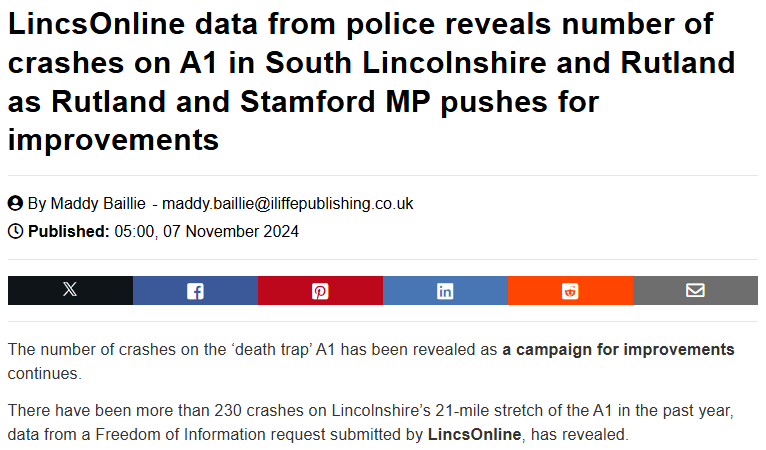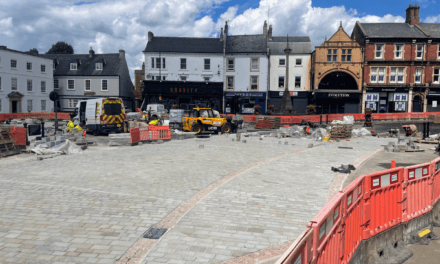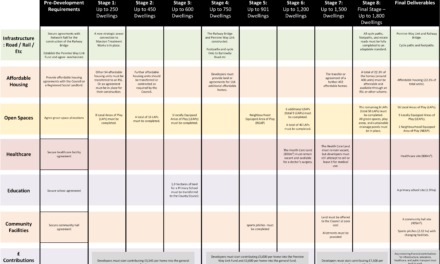The A1 in Lincolnshire continues to earn its reputation as one of the UK’s most dangerous roads. Recent data from a Freedom of Information request published by LincsOnline shows how severe the situation has become. Over the past year, Lincolnshire’s 21-mile stretch of the A1 saw 232 reported crashes, including three fatal accidents. This equates to almost one crash every other day, illustrating the daily risk road users face and the relentless demand for emergency services.
Of these incidents:
- Three resulted in fatalities;
- Eight led to severe injuries;
- Fifty resulted in minor injuries;
- One hundred seventy-one were classified as “damage-only” collisions.
These figures underscore the reality: the A1 is not merely a “risky” route—it’s a critical safety hazard for Lincolnshire residents, commuters, and commercial drivers alike. As it stands, the road’s design fails to meet the demands of modern traffic, with outdated junctions, dangerous right-turn crossings, and poorly designed slip roads. As I’ve stated, National Highways’ inaction to address these issues is almost a crime. Every incident here represents lives disrupted, potential trauma, and economic loss for our county.
In a July 2024 debate, members of Parliament highlighted the broader issue, noting that more than 500 crashes occurred along the A1 across different regions in 2022. As traffic volumes grow, so does the risk, especially in high HGV areas like Lincolnshire, where around 20-25% of vehicles are heavy goods vehicles (HGVs) compared to a national trunk road average of 12%.
The Midlands Connect A1 Corridor study estimates an annual average of 136 collisions in the Lincolnshire segment alone, with a fatal collision rate exceeding the national average for similar roads. The route’s lack of resilience is evident, with 201 lane closures over the past five years due to incidents—an average of one every 2.5 weeks. These closures put drivers at risk and have a severe knock-on effect on local traffic, affecting communities and businesses reliant on the A1 for connectivity.
Recent efforts by Transport for the East Midlands (TfEM) and MP Alicia Kearns to pressure National Highways have begun to bring some attention to the issue. While I applaud these efforts, we need immediate and concrete action. Proposed solutions include:
- Upgrading sections of the road with extra lanes,
- Closing hazardous crossing points and building safer crossings and bridges.
- Introducing concrete barriers to replace unsafe gaps,
- Implementing advanced traffic management with CCTV and variable messaging and
- Improving road design at critical junctions to reduce collision points and traffic congestion.
Simply closing the crossing points on the A1 isn’t a practical solution; while it might reduce certain collision risks, it risks cutting off local communities and creating new issues. Many residents rely on these crossings to access nearby villages, schools, and essential services, and closing them without providing alternative routes would seriously disrupt daily life. The reality is that a balance must be struck between safety and accessibility. What we need are thoughtful, well-engineered solutions—such as building safer overpasses or underpasses at critical junctions or redesigning crossings to limit high-speed conflicts—so that people can move safely across and along the A1 without being forced into lengthy detours or isolated from surrounding areas. National Highways must consider local needs and provide solutions that enhance safety without sacrificing the connectivity that rural communities depend on.
The case for action on the A1 is beyond compelling. It’s about lives and livelihoods. The government’s continued failure to fund necessary improvements is not just an oversight; it’s a dereliction of duty. I urge National Highways to prioritise this stretch of the A1, release funding, and begin implementing the safety measures we desperately need.
Lincolnshire deserves a safe, reliable road network. As your County Councillor for Highways, I will continue fighting to hold National Highways accountable. I ask our community to continue speaking up, lobbying MPs, and supporting petitions calling for action on the A1. Together, let’s ensure our voices are heard loudly and clearly.
It’s time to turn these appalling statistics into a call for change, ensuring the A1 is no longer a ”death trap” but a safe, essential route for Lincolnshire.






Recent Comments